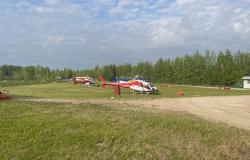There are efforts that are bearing fruit. HCFC emissions, which are particularly harmful to the ozone layer, are decreasing more quickly than previously thought.
The good news was quickly relayed on www.climat.be, the Belgian federal government’s website on climate change. This is a scientific study published by Nature Climate Change (attached to the very serious publication Nature) which shows that hydro-chlorofluorocarbons (HCFCs), particularly used in the cooling systems of refrigerators or air conditioners or even in the blowing of insulating foams, reached their maximum in 2021 before starting to decrease. This drop comes five years earlier than previously announced. You should know that HCFCs are much more powerful and destructive of the ozone layer than the famous carbon dioxide (CO2), which is the main greenhouse gas caused by human activity. HCFC-22, which is the most abundant HCFC in the atmosphere, has a warming capacity 1,910 times greater than that of CO2 over a period of one hundred years.
An international agreement, adopted in 1987 and entered into force two years later, aimed to gradually eliminate ozone-depleting gases such as CFCs (chlorofluorocarbons) found in aerosol cans and cooling systems. These particularly toxic gases were then replaced, at the end of the 20th century, by gases considered less dangerous andespecially less persistent in the atmosphere like HCFC (less than twenty years for the second compared to decades for the first). But the latter has proven too damaging for the climate, especially since its global production has exploded. It was therefore necessary to adopt several amendments to the Montreal Protocol to rectify the situation.
This has paid off, proving that environmental treaties, when properly implemented, can have concrete repercussions. That said, there is still a long way to go before the ozone layer returns to its pre-1980s level when scientists detected a growing hole in this stratospheric protection.






